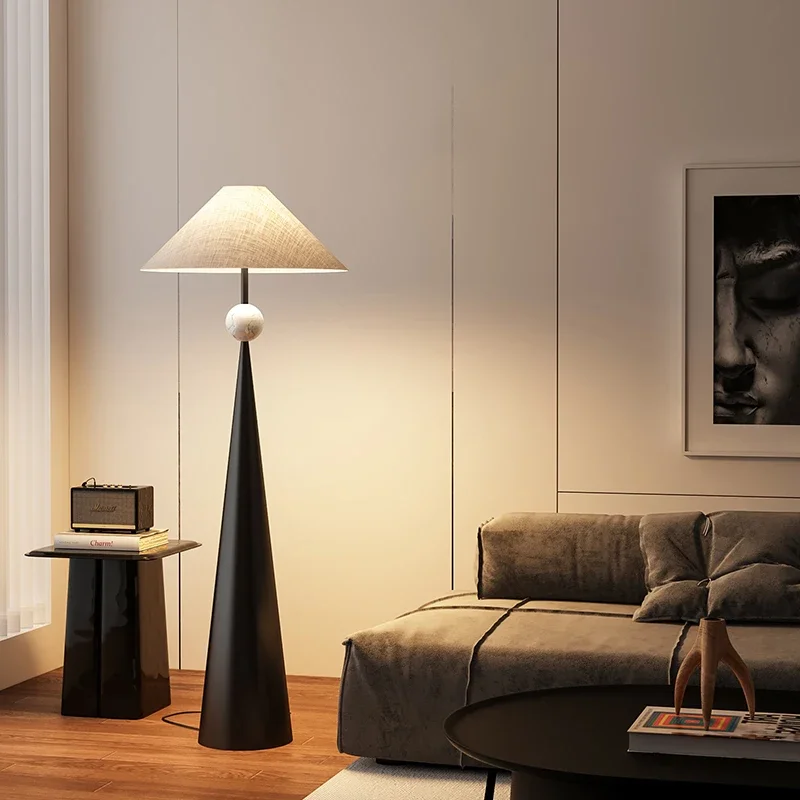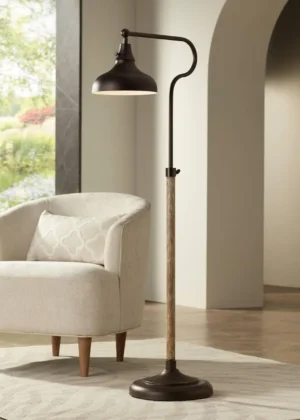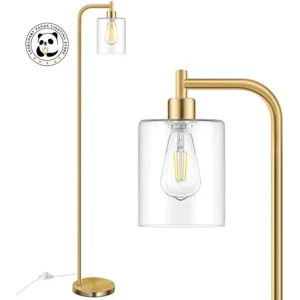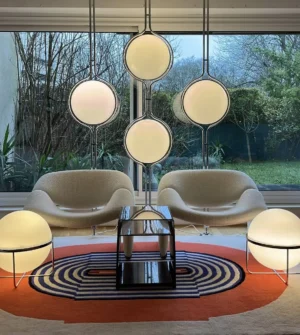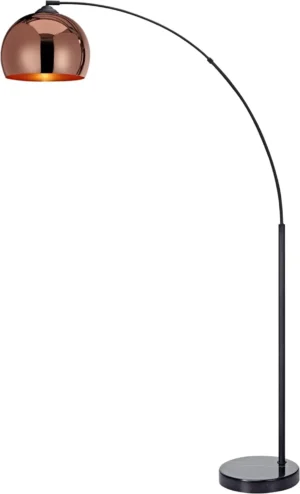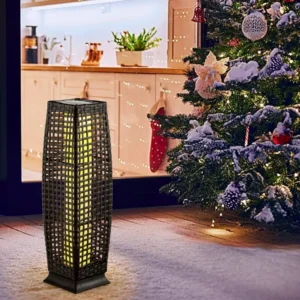Can Wood Arc Lamps Heat Your Room? Understanding Their True Purpose
No, wood arc lamps cannot effectively heat a room. Wood arc lamps are primarily decorative lighting fixtures designed to enhance your room’s aesthetic appeal and provide ambient lighting. They produce minimal heat – certainly not enough to warm a room in any meaningful way.
When we talk about “warming” a space, it’s important to distinguish between two different types of warmth:
- Physical warmth – The actual temperature increase in a room
- Visual/emotional warmth – The feeling of coziness and comfort created by design elements
Wood arc lamps excel at creating visual warmth through their elegant designs and the soft, ambient light they cast. Their wooden elements add a natural touch that many find inviting and comforting. However, if you’re looking to raise the actual temperature in your room, you’ll need dedicated heating solutions.
Most modern lamps, including wood arc lamps, use energy-efficient LED or CFL bulbs that convert the majority of electricity into light rather than heat. Even with traditional incandescent bulbs (which are less common today), the heat output is minimal and quickly dissipates.
In this article, we’ll explore both aspects of warming a room: effective heating solutions that actually raise the temperature, and how to use wood arc floor lamps strategically to create the perception of warmth through ambiance and design.
The Science Behind Light vs. Heat: Why Most Lamps Aren’t Effective Heaters
To understand why wood arc lamps don’t heat rooms effectively, it helps to understand the basic science of energy conversion in lighting fixtures.
Energy Conversion in Different Bulb Types:
- LED bulbs: Convert approximately 90% of energy to light and only 10% to heat
- CFL bulbs: Convert about 80% of energy to light and 20% to heat
- Incandescent bulbs: Convert only 10% of energy to light and 90% to waste heat
While incandescent bulbs do produce more heat, they’re remarkably inefficient as heaters. A typical 60-watt incandescent bulb might reach 200°F (93°C) on its surface but affects the temperature of only the immediate surrounding area. In contrast, even a small 1500-watt space heater provides 25 times more energy specifically designed for heating.
It’s also important to understand the difference between modern decorative arc lamps and historical carbon arc lamps. The purpose and evolution of arc lamps shows that early carbon arc lamps from the 19th century did produce significant heat as they created light through an electrical arc between carbon electrodes. Today’s wood arc lamps, however, are entirely different fixtures that use standard household bulbs.
When shopping for lighting, you’ll notice measurements in lumens (light output) rather than heat output because that’s their primary purpose. For example, LED arc floor lamps are celebrated for their energy efficiency precisely because they don’t waste energy producing heat.
Modern wood arc lamps are therefore excellent for:
* Creating ambient lighting
* Adding design elements to your space
* Highlighting architectural features
* Providing task lighting for reading or activities
But for actual temperature control, you’ll need dedicated heating solutions.
Effective Physical Room Heating Solutions: Beyond Decorative Lighting
Since wood arc lamps aren’t designed for heating, let’s explore effective methods to actually warm your room physically. These solutions range from simple, low-cost options to more substantial investments.
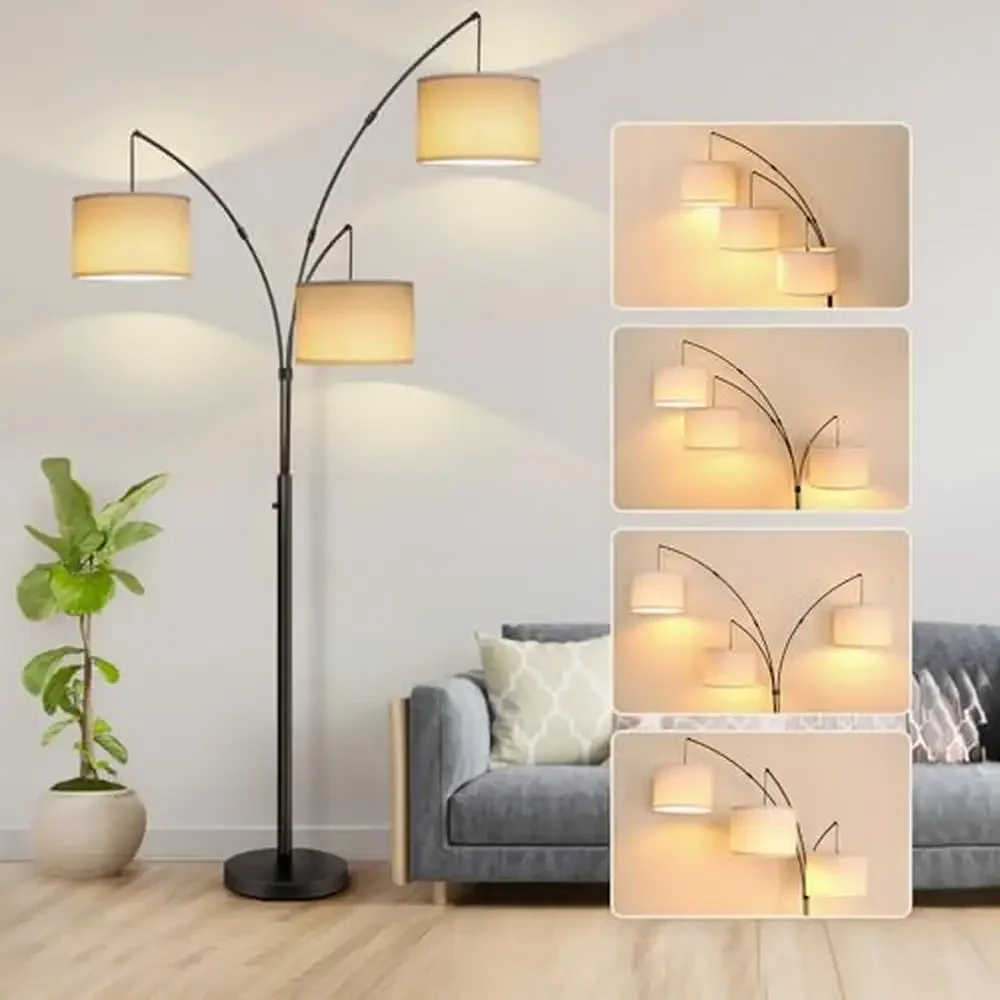
Space Heaters: Types, Efficiency, and Safety Considerations
Space heaters are one of the most straightforward solutions for targeted room heating. The main types include:
- Convection heaters: Heat the air, which then circulates throughout the room. Best for heating entire rooms over longer periods.
- Radiant/infrared heaters: Direct heat toward people and objects rather than heating the air. Provide immediate warmth but only in a specific direction.
- Ceramic heaters: Use ceramic plates that heat up quickly and a fan to distribute warmth. Good balance of quick heating and safety.
- Oil-filled radiators: Provide consistent heat and continue radiating warmth even when turned off. Energy efficient but slower to warm up.
When selecting a space heater, match the heater capacity to your room size:
| Room Size | Required BTUs | Approximate Wattage |
|---|---|---|
| 100 sq ft | 5,000 BTU | 1,500 watts |
| 200 sq ft | 9,000 BTU | 2,500+ watts |
| 300 sq ft | 13,000 BTU | 3,800+ watts |
Important Safety Guidelines:
* Always keep heaters at least 3 feet away from any flammable materials
* Never leave space heaters unattended while operating
* Place on level, non-flammable surfaces
* Buy models with automatic shut-off features if they tip over
* Avoid using extension cords with heaters
* Keep heaters away from water sources
A quality space heater costs between $30-$100 for basic models and can dramatically improve comfort in a single room without heating your entire home.
Improving Room Insulation: Sealing Heat Loss Points
Before investing in heating solutions, make sure you’re not losing the heat you already have. Improving insulation is often more cost-effective than generating additional heat.
Common Heat Loss Points:
* Windows (up to 25% of heat loss)
* Doors (especially underneath and around frames)
* Electrical outlets on exterior walls
* Attic access points
* Fireplace dampers when not in use
DIY Solutions for Better Insulation:
1. Window treatments: Apply window film insulation kits that create an air barrier
2. Door draft stoppers: Install door sweeps or use fabric draft blockers
3. Outlet insulators: Add foam gaskets behind outlet covers on exterior walls
4. Weather stripping: Apply around windows and door frames
5. Heavy curtains: Hang thermal curtains that trap air and block drafts
These simple improvements can raise a room’s temperature by 2-5°F without any additional heating sources and typically cost between $5-$30 per solution.
For significant results, combine insulation improvements with strategic heating. The heat you save is just as valuable as the heat you generate!
Creating Visual Warmth with Wood Arc Lamps: The Psychology of Cozy Spaces
While wood arc lamps don’t provide physical heat, they excel at creating visual warmth—that cozy, inviting feeling that makes a space feel comfortable and welcoming. This psychological warmth is just as important for comfort as actual temperature.
The human brain processes visual cues strongly when assessing comfort. Research shows that rooms with warm-toned lighting (yellows, ambers, and reds) are consistently rated as feeling “warmer” than identical rooms with cool-toned lighting (blues and whites)—even when the actual temperature is the same.
Wood as a material inherently communicates warmth through its natural colors and organic textures. Combined with the right lighting, wooden elements can transform the mood of a space. The latest decor trends in wood arc lamps take advantage of this effect by featuring exposed wood grains and warm finishes.
The strategic placement of wood arc lamps creates pools of warm light that draw people in and establish cozy zones within larger spaces. This technique, called light layering, uses multiple light sources at different heights to create dimension and warmth.
For maximum visual comfort, consider these principles:
* Position lamps to illuminate walls rather than empty space
* Create contrast between lit and unlit areas (contrast creates visual interest)
* Use lighting to highlight natural materials and textures
* Layer different light sources rather than relying on a single overhead light
When creating ambiance with dimmable arc lamps, you can adjust the light levels throughout the day, brightening spaces for activities and softening them for relaxation.
Lighting Color Temperature: Choosing the Right Bulbs for Warmth
The color temperature of your light bulbs dramatically affects how warm or cool a space feels. This temperature is measured in Kelvin (K):
- 2700K – 3000K: Warm white/soft white – Creates a cozy, inviting atmosphere similar to sunset lighting
- 3500K – 4100K: Cool white – Neutral, clean lighting suitable for workspaces
- 5000K – 6500K: Daylight – Crisp, energizing light that mimics noon sunlight
For creating warmth, stick to the lower end of this spectrum. Bulbs in the 2700K range provide the most flattering, comfortable light for living spaces and bedrooms.
Most wood arc lamps accept standard bulbs, making it easy to select the right color temperature. For maximum flexibility, consider dimmable arc floor lamps that allow you to adjust not just the brightness but the perceived warmth of your space.
| Bulb Type | Typical Color Temperature | Best For Creating Warmth |
|---|---|---|
| Standard LED | 2700K – 5000K | Choose 2700K – 3000K |
| Smart LED | Adjustable | Program warmer settings for evenings |
| Edison/Vintage | 2200K – 2700K | Very warm, amber glow |
| Halogen | 2800K – 3400K | Warm white light |
Many people underestimate how much bulb selection affects their comfort. Simply changing from 4000K to 2700K bulbs can make a room feel substantially cozier without changing anything else.
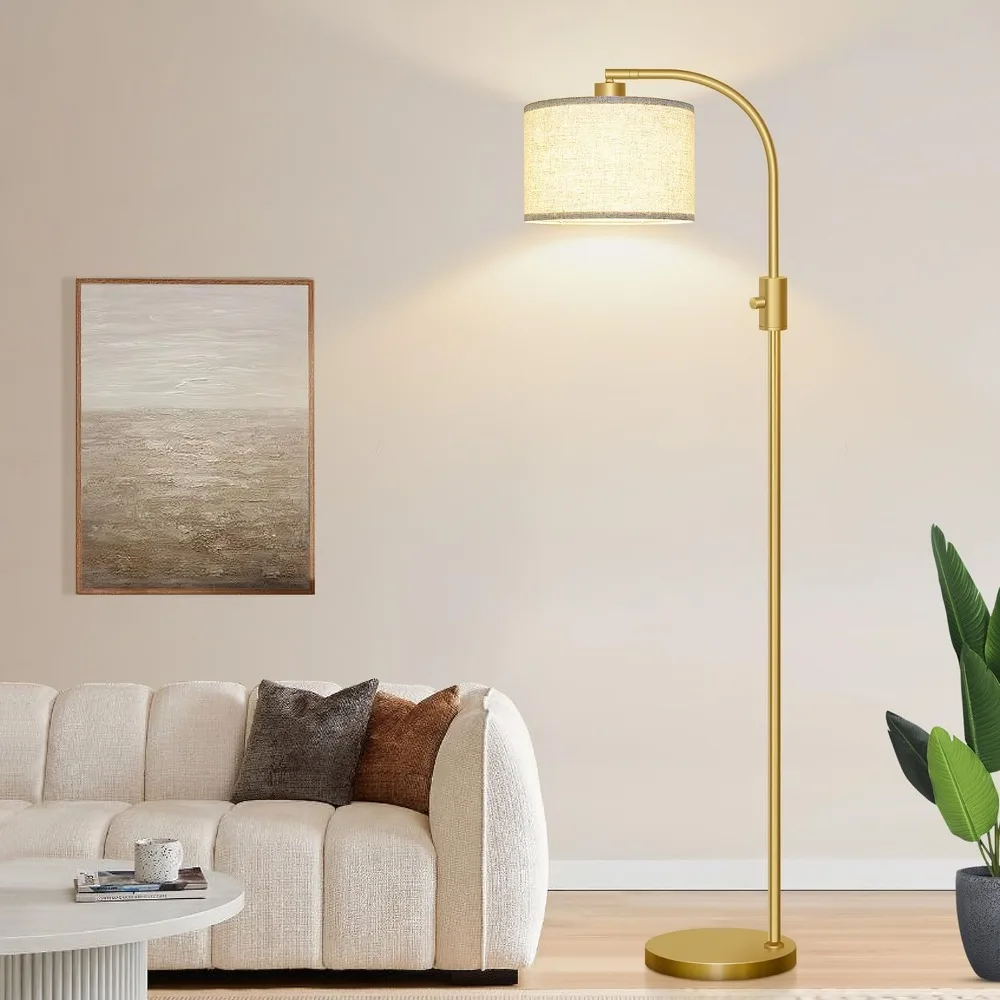
Strategic Placement of Wood Arc Lamps for Maximum Visual Warmth
The position of your wood arc lamp dramatically affects both its functionality and its contribution to a room’s warmth. Unlike table lamps, arc lamps project light from above, creating pools of illumination that define spaces within a room.
For optimal positioning of your arc floor lamp, consider these guidelines:
- For reading/task areas: Position the arc approximately 26-32 inches from the center of your seating, with the light source 58-64 inches above the floor and angled toward your dominant hand to minimize shadows
- For ambient lighting: Place the lamp in a corner, directing light toward the center of the room or angling it to wash light down a wall
- For highlighting features: Position to cast light on architectural elements, artwork, or textured surfaces that enhance warmth
Common mistakes to avoid:
* Placing lamps where they block natural pathways through the room
* Positioning too close to walls, which creates harsh shadows
* Using them as the only light source in a room (layered lighting works best)
* Setting the light too high or low for comfortable use
Proper placement not only enhances the visual warmth but also ensures your lamp serves its functional purpose while complementing your room’s overall design.
Enhancing Warmth Through Material Complementarity: Wood and Textiles
Wood arc lamps don’t exist in isolation—they work with your other design elements to create a cohesive sense of warmth. The harmonious interaction between materials is key to creating spaces that feel genuinely cozy.
Wood naturally pairs well with:
* Natural fibers: Wool, cotton, jute, and linen complement wood’s organic quality
* Soft textiles: Plush throws, area rugs, and upholstered furniture create tactile warmth
* Leather: Ages beautifully alongside wood and develops a warm patina over time
* Warm metals: Brass, copper, and gold-toned metals enhance wood’s warmth
Color theory also plays an important role. Woods with red or yellow undertones (like cherry or oak) pair beautifully with complementary colors like deep greens and blues, which make the wood appear even warmer by contrast.
When selecting your perfect arc floor lamp, consider not just the lamp in isolation but how its wood tones will interact with your existing furnishings. Medium-toned woods are the most versatile, while darker woods create more dramatic contrast and lighter woods contribute to an airier feel.
Layering different textures creates depth and visual interest that enhances perceived warmth. Consider:
* Adding a thick area rug under furniture groupings
* Incorporating throw pillows in varying textures
* Draping soft throws over seating
* Using window treatments with substantial weight
These textile elements not only look warm but actually provide physical warmth through insulation, creating a multi-sensory experience of comfort.
Integrating Heating Solutions with Aesthetic Lighting: The Best of Both Worlds
The most successful warm rooms combine both physical heating solutions and aesthetic elements like wood arc lamps. Here’s how to create a space that’s both actually warm and visually inviting.
Strategic Furniture Arrangement:
* Position seating near heat sources but within pools of warm lamp light
* Create conversation areas that benefit from both heating and lighting
* Keep pathways clear between heat sources and frequently used areas to allow warm air circulation
Seasonal Adjustments:
* Winter: Position heaters to warm main seating areas, with wood arc lamps providing complementary warm light
* Transitional seasons: Rely more on the visual warmth of lighting as heating needs decrease
* Summer: Adjust lamp placement to avoid creating hot spots when cooling is the priority
By thinking about both heating and lighting in your room planning, you can create zones of comfort that address both physical and psychological needs.
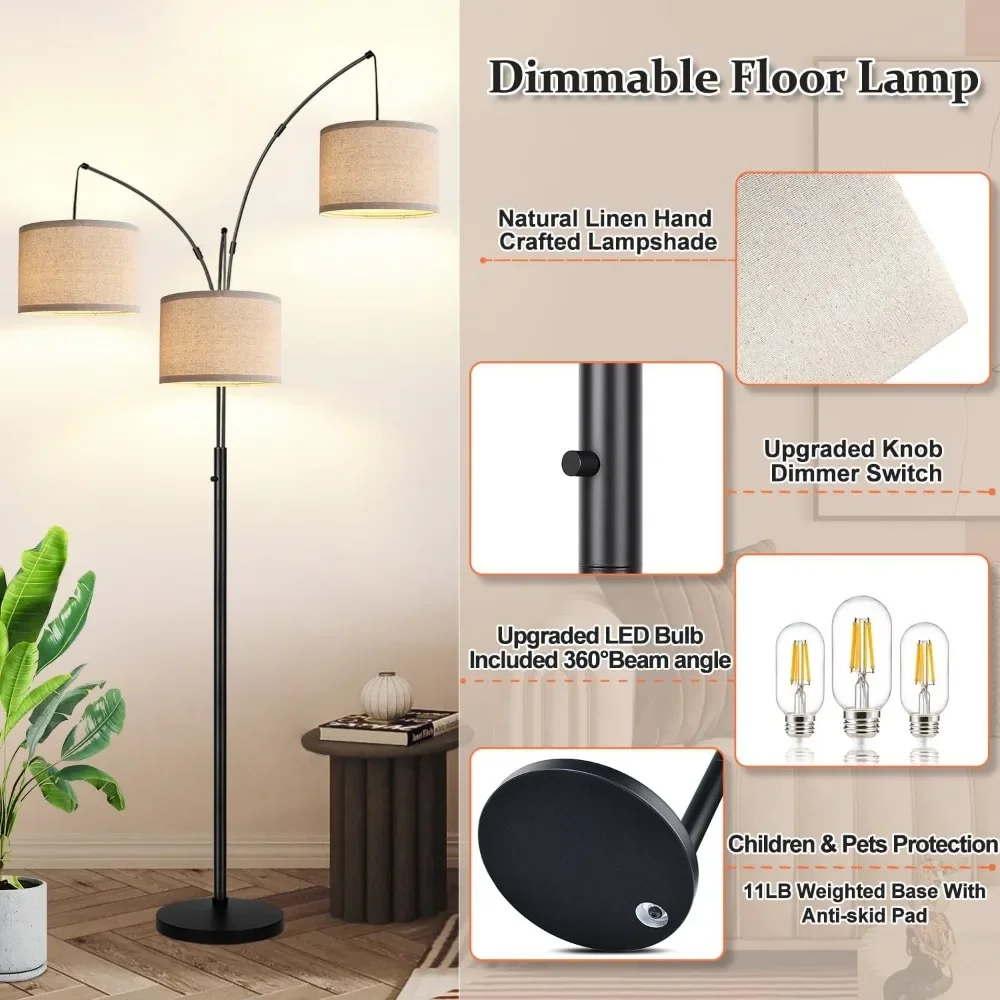
Adjustable Arc Floor Lamp, Bronze Arc Floor Lamp
Price range: $440.95 through $558.52 Select options This product has multiple variants. The options may be chosen on the product pageBrass Arc Floor Lamp, Contemporary Arc Floor Lamp, LED Arc Floor Lamp
Price range: $490.72 through $522.04 Select options This product has multiple variants. The options may be chosen on the product pageChrome Arc Floor Lamp, LED Arc Floor Lamp
Price range: $304.95 through $1,210.40 Select options This product has multiple variants. The options may be chosen on the product pageContemporary Arc Floor Lamp, Large Arc Floor Lamp, Marble Base Arc Floor Lamp
$224.94 Select options This product has multiple variants. The options may be chosen on the product pageMid-Century Arc Floor Lamp, Wood Arc Floor Lamp
$230.86 Select options This product has multiple variants. The options may be chosen on the product pageLED Arc Floor Lamp, Rattan Arc Floor Lamp
$313.58 Select options This product has multiple variants. The options may be chosen on the product page
When planning your space, remember that heat rises, so low-profile heaters often work best when placed near the floor, while lighting is more effective when positioned at eye level or above. This natural complementarity allows both elements to work together without competing.
Safety Considerations When Combining Lighting and Heating Elements
Safety should always be a priority when creating a warm room environment. When using both heating appliances and lighting fixtures, follow these important guidelines:
- Electrical load management: Avoid plugging heaters and lamps into the same outlet or circuit, as heaters draw substantial power
- Safe distances: Keep heating elements at least 3 feet away from lamps, especially those with wooden components
- Cord management: Secure all cords away from walkways and heating elements
- Circuit protection: Ensure your home has proper circuit breakers and consider dedicated circuits for heating appliances
Most modern material-feature arc floor lamps are designed with safety in mind, but they still require proper placement away from heat sources. Always check manufacturer guidelines for specific safety recommendations.
For households with children or pets, additional precautions may be necessary:
* Choose heaters with cool-touch exteriors
* Secure top-heavy lamps to prevent tipping
* Consider wall-mounting options for both heaters and lighting where appropriate
* Use cord covers or cord management systems to prevent tripping or chewing
These safety measures ensure you can enjoy both the physical comfort of proper heating and the aesthetic warmth of beautiful lighting without unnecessary risks.
Is Wood Flammable? Addressing Safety Concerns About Wood Arc Lamps
A common question about wood arc lamps concerns the flammability of their wooden components. While wood is indeed combustible, there’s little reason for concern with properly manufactured wood arc lamps used as intended.
Modern wood arc lamps are designed with safety in mind:
* The wooden elements are typically located on the base or body of the lamp, far from the bulb
* Most use LED or CFL bulbs that produce minimal heat
* Wood components are often treated with fire-resistant finishes
* Quality lamps comply with safety standards that require materials to resist ignition
The ignition temperature of finished wood is typically around 540-600°F (280-315°C), while the surface of an LED bulb rarely exceeds 85°F (29°C). Even traditional incandescent bulbs, which run hotter, remain below the ignition threshold of treated wood when properly installed in fixtures designed for them.
To ensure ongoing safety:
* Always use bulbs of the recommended wattage or lower
* Keep lamps dust-free, as dust buildup can potentially trap heat
* Inspect cords and switches periodically for wear
* Replace any cracked or damaged wooden components
With proper use, wood arc lamps pose minimal fire risk while adding beautiful natural elements to your space.
Can You Make Your Wood Arc Lamp More Energy Efficient?
While wood arc lamps contribute primarily to visual warmth rather than heating, making them more energy-efficient benefits both your utility bills and the environment.
Bulb Selection for Maximum Efficiency:
* Replace any incandescent bulbs with LED equivalents (saves up to 80% energy)
* Choose Energy Star certified bulbs when available
* Look for high lumens-per-watt ratios to get the most light for your energy use
Smart Technology Integration:
* Add smart plugs to control lamps remotely or set schedules
* Use motion sensors to ensure lights are only on when needed
* Install dimmer switches compatible with your bulb type to use only the necessary amount of light
Usage Optimization:
* Position lamps to maximize useful light coverage
* Use timers to prevent lamps from running when not needed
* Clean bulbs and shades regularly, as dust can reduce light output by up to 30%
These efficiency improvements complement the mastering of ambient lighting with arc lamps and ensure your fixtures provide maximum visual warmth with minimal energy consumption.
How Different Wood Tones Affect the Perception of Warmth in a Room
The specific tone of wood in your arc lamp significantly impacts how warm a space feels visually. Wood tones range from pale blonds to deep ebonies, each creating different effects:
- Light woods (maple, ash, birch): Create an airy, spacious feel that works well in smaller rooms
- Medium woods (oak, cherry, teak): Offer balanced warmth that complements most design styles
- Dark woods (walnut, mahogany): Provide dramatic contrast and traditional elegance
These tones interact differently with light as well. Lighter woods reflect more light around a room, while darker woods absorb light and create more intimate atmospheres. The mid-century arc floor lamp styles often showcase warm medium tones that strike an ideal balance.
The finish applied to wood also affects its warmth perception:
* Matte finishes create a softer, more organic feel
* Glossy finishes reflect more light but can appear less natural
* Oil finishes enhance the natural grain and deepen color over time
When selecting wood tones for your space, consider:
* The size of your room (lighter tones for smaller spaces)
* Existing wooden elements (complementary tones work best)
* The amount of natural light (less light benefits from lighter woods)
* Your color palette (wood should complement wall and textile colors)
By thoughtfully selecting wood tones, you can enhance the perceived warmth of your space even before you turn on the lamp.
Interior Ivy offers a wide selection of wood arc lamps with various tones and finishes to suit any interior design approach. While these beautiful fixtures won’t heat your room physically, they play an essential role in creating the warm, inviting atmosphere that makes a house feel like home.

